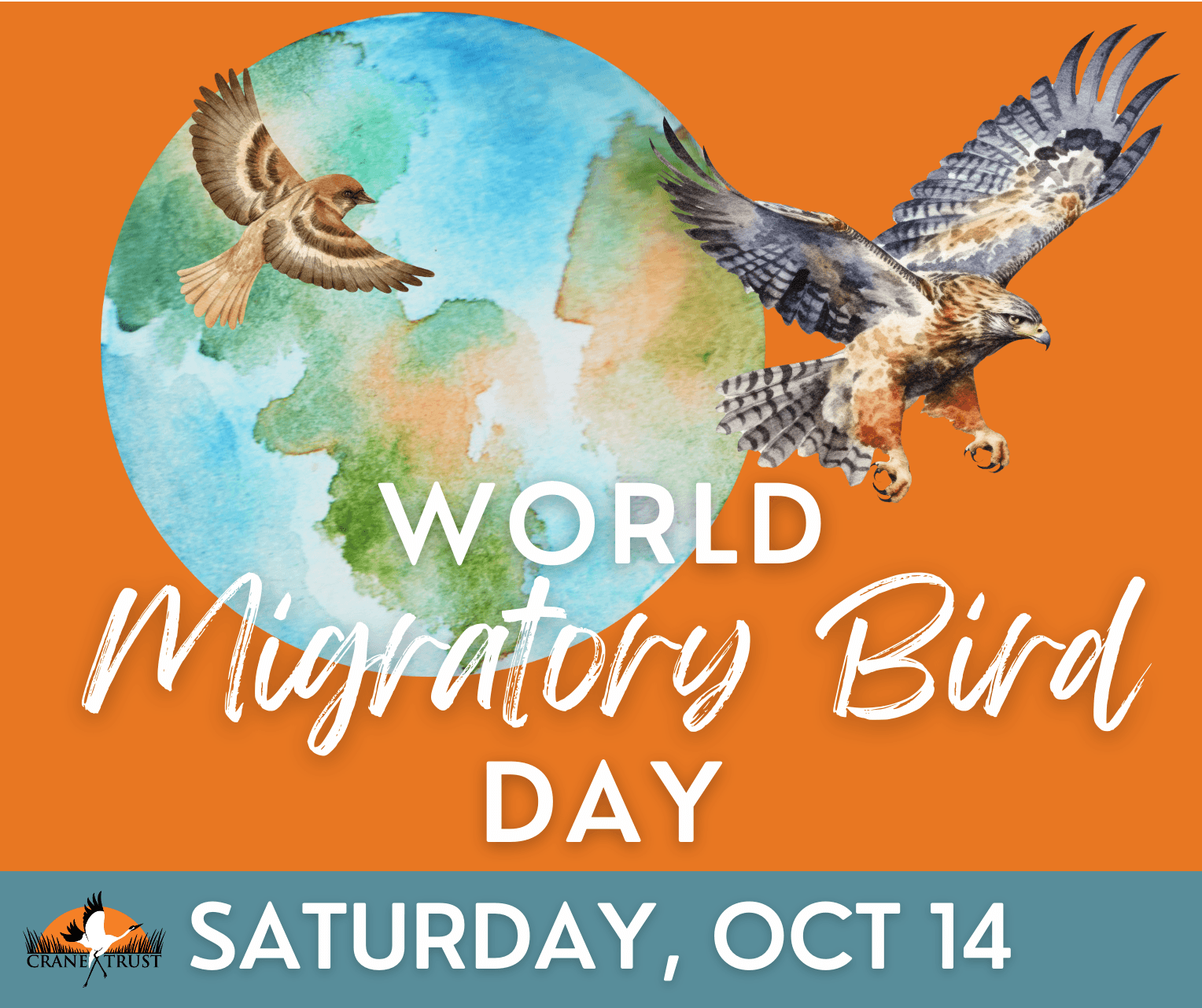
Location, location, location! Many birds move with the change of seasons to find habitat that provides the resources they need to survive, namely food and nesting locations. Many bird species could survive cold conditions, but insects and other food sources cannot. Therefore, more than half of the 650 species of North American breeding birds are migratory.
Each spring and fall, there are large-scale movements of birds between their breeding (summer) homes and their nonbreeding (winter) grounds. Migratory periods vary greatly in different regions and for different species of birds. To celebrate these mass movements and spread awareness, we recognize two annual World Migratory Bird Days on the second Saturday in May and the second Saturday in October.
World Migratory Bird Day highlights the need for the conservation of migratory birds and their habitats. The event is recognized around the world to acknowledge the ecological importance of migratory birds and to raise awareness of the threats they face.
Let’s Go Birding!
View and download the Crane Trust Bird List at this link to see more than 250 species of birds identified on Crane Trust land in the last five years. Our biologists survey birds throughout the year and record identified species. You, too, can explore our trails and use this list to record your sightings! We also encourage you to upload sightings at eBird, a worldwide resource and bird database.
Migratory Birds Need Human Help
Migrating birds might travel short distances, as between elevations on a mountainside, or for thousands of miles like the Whooping Cranes and Sandhill Cranes that rely on Crane Trust’s essential habitat. The complex conditions required for all migratory birds’ survival rely on human stewardship of natural spaces.
Bird migrations are dangerous journeys. Natural threats include predators, severe weather, drought, food scarcity, and other factors. In addition, brightly lit communication towers and tall buildings are posing major threats. Millions of migrating birds are disoriented by the lights and killed each year in collisions with these structures. Just last week, nearly 1,000 birds were killed in one night when they struck a lighted Chicago building.
Decreasing intensity and density of outdoor lights during migration periods can help birds survive their travels. You can include more native plants in your landscaping wherever you are. This supports insect and plant life, which in turn provides greater food sources for all birds whether they are migratory visitors or year-round residents.
Want to learn more? Visit the links below or come explore for yourself at Crane Trust Nature & Visitor Center!
References
https://www.migratorybirdday.org
https://www.allaboutbirds.org/news/the-basics-how-why-and-where-of-bird-migration/
https://www.audubon.org/lights-out-progra
https://www.bbc.com/news/world-us-canada-6707002
https://ebird.org/home
